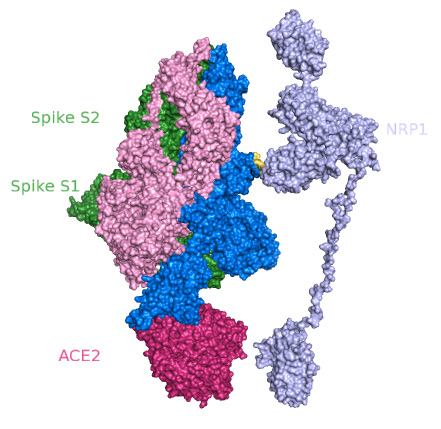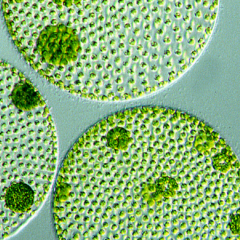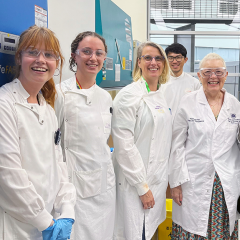An international team has found a way to potentially prevent the novel coronavirus from infecting cells, as well as clues as to why it is more infectious than similar viruses.
University of Bristol researchers Dr Yohei Yamauchi and Professor Peter Cullen identified where the virus binds when it is infecting host cells and then joined forces with Dr Kai-En (Kevin) Chen and Professor Brett Collins from IMB to find out more.
Where and how the virus binds
Putting more pieces of the puzzle together, Dr Chen and Professor Collins were able to show exactly how the virus binds to a host cell by modelling the site where they interact.
“The SARS-CoV-2 virus uses a protein called Spike to bind and enter host cells, and we now know that in addition to the already known ACE2 receptor, the Spike binds to a second receptor on the host cells called neuropilin,” Professor Collins said.

“We used X-ray crystallography to see the structure of proteins at the atomic level and visualise the binding sites at a spectacular level of detail.”
Blocking the binding
The University of Bristol team then looked at the effect of disrupting the binding between the virus and the second receptor.
"We discovered that by blocking the virus protein from binding neurophilin on the cells, it was possible to reduce the infection rate of the virus," Dr Yamauchi said.
“If we can make a drug that blocks the virus from binding to cells, this has potential as a new therapy for treating COVID-19."
A high infection rate
The sequence in the COVID-19-causing SARS-CoV-2 virus that binds to the receptor is found in other pathogenic human viruses such as Ebola and HIV-1, but not in Sars-CoV.
Researchers believe that may be why it is so infectious compared to other SARS viruses .
This research was published in Science.



